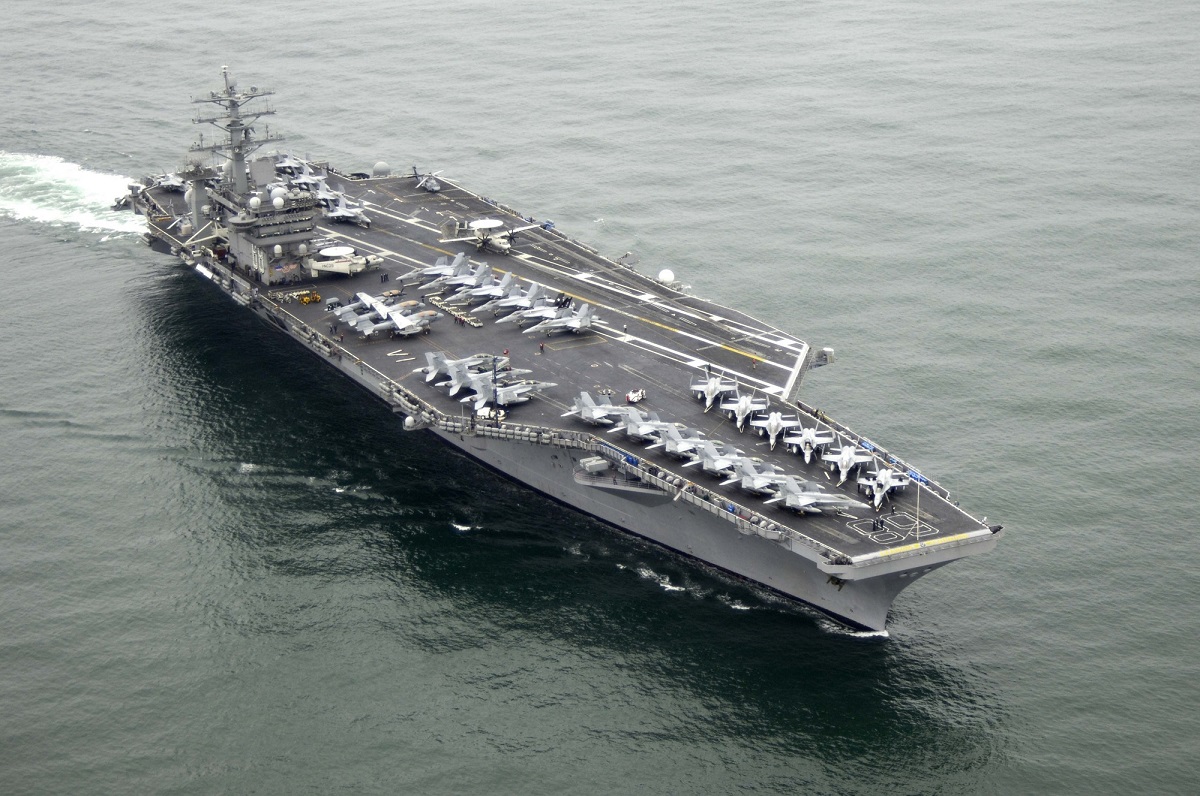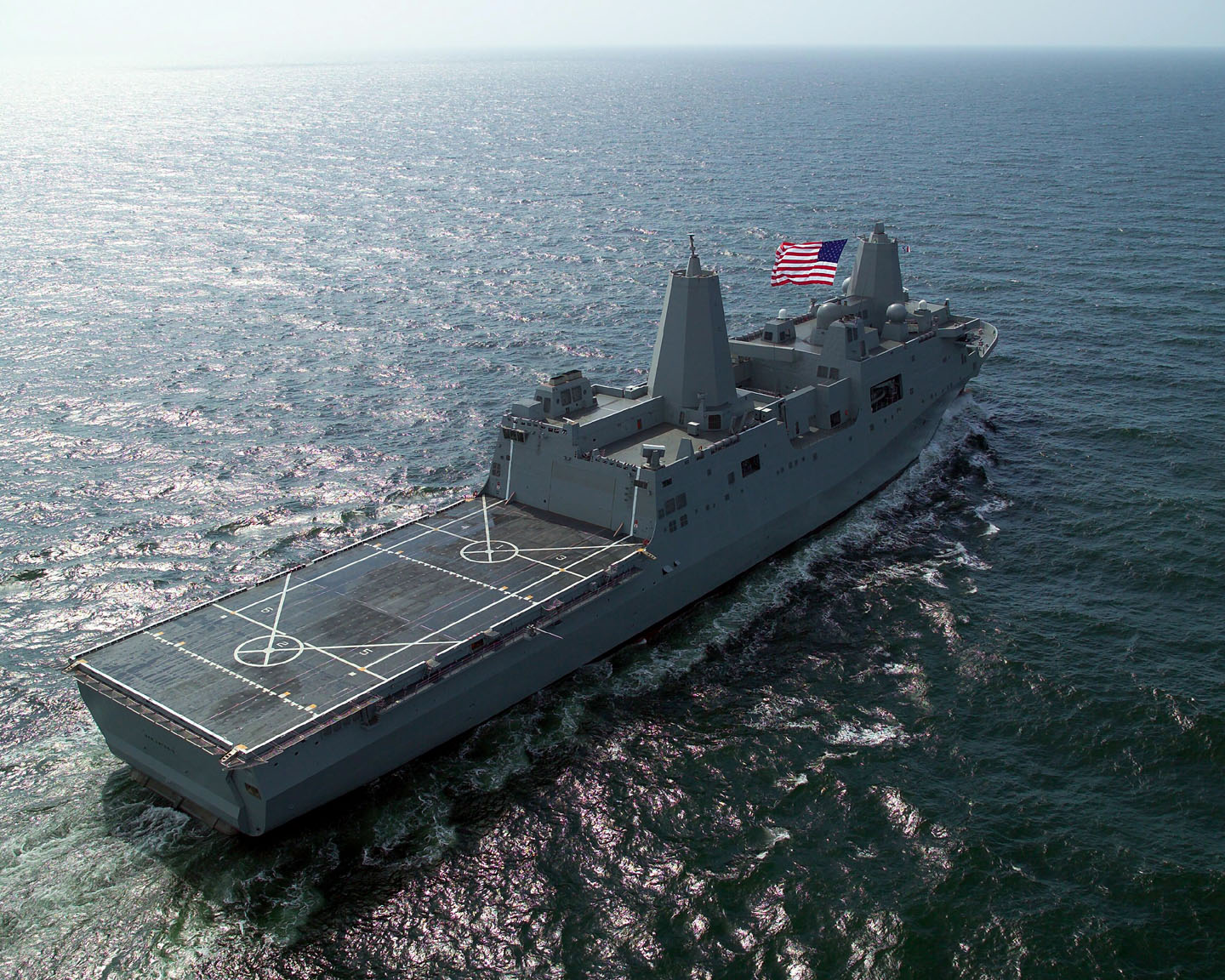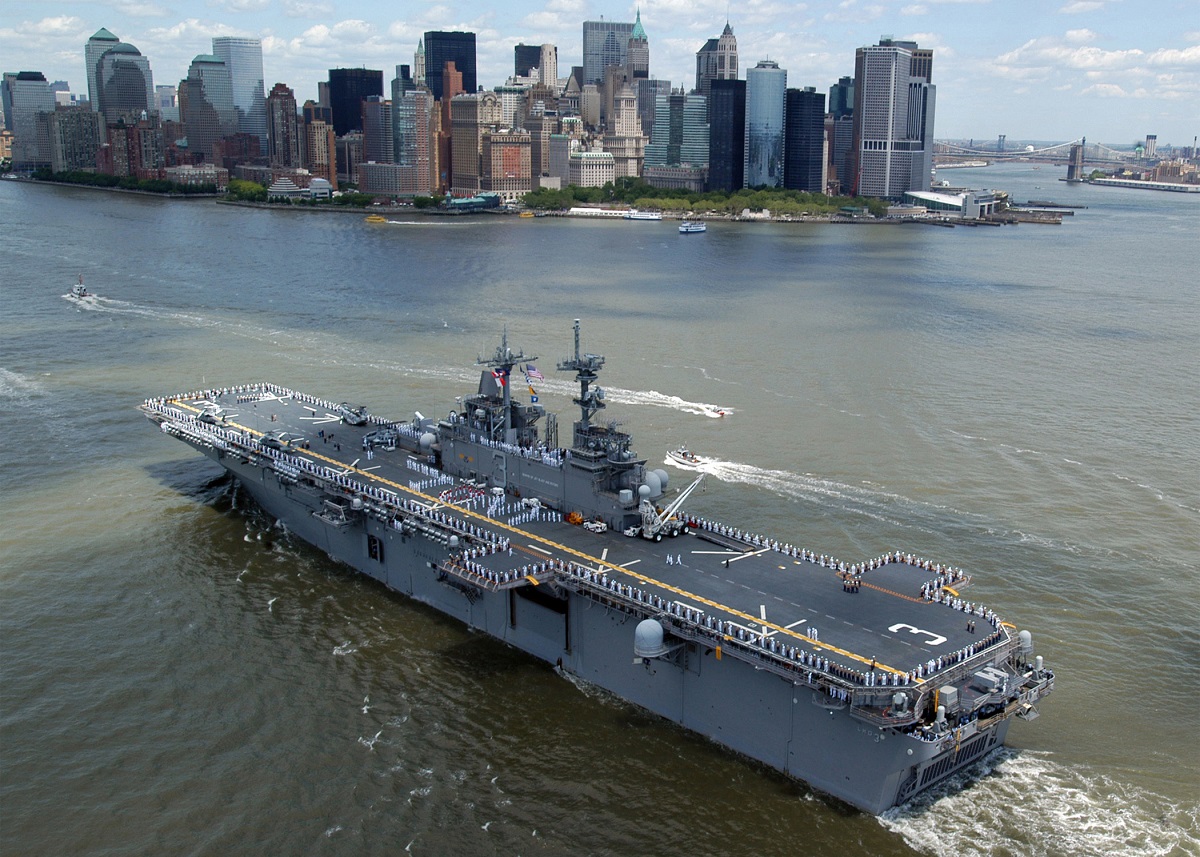It looks like you're using an Ad Blocker.
Please white-list or disable AboveTopSecret.com in your ad-blocking tool.
Thank you.
Some features of ATS will be disabled while you continue to use an ad-blocker.
3
share:
The signals from Washington suggest that military action against Syria is a strong possibility..
The US Navy is re-positioning several vessels, including four cruise missile-carrying destroyers in the eastern Mediterranean and probably a missile-firing submarine.
If more firepower is needed, two US aircraft carriers could launch air strikes, and land bases in Turkey and Cyprus might also be used. French air power could also play a part.

But what kind of military action is being proposed ? What risks are involved ? What is the rationale behind such action? And, perhaps most importantly, how might Western military action contribute to a resolution of the Syrian crisis, if at all?
Forces which could be used against Syria:
• Five US destroyers - USS Gravely, USS Ramage, USS Barry, USS Mahan and USS Stout - are in the eastern Mediterranean, equipped with cruise missiles. The missiles can also be fired from submarines, but the US Navy does not reveal their locations.
• Airbases at Incirlik and Izmir in Turkey, and in Jordan, could be used to carry out strikes
• One aircraft carrier - USS Nimitz with three destroyers and a cruiser have moved into the southern Red Sea. A second aircraft carrier USS Harry S Truman is in the wider region.
• French aircraft carrier Charles de Gaulle is currently in Toulon in the western Mediterranean
• French Rafale and Mirage aircraft can also operate from Al-Dhahra airbase in the UAE
So what are the military options?
1. Limited stand-off strikes
Some might call these punitive strikes.
The aim would be to get Syrian President Bashar al-Assad's attention and to persuade him not to resort to chemical weapons in the future. Targets could include military sites linked closely to the regime - the headquarters or barracks of elite units, for example.

Missile production facilities could be hit. Caution would have to be exercised if striking chemical weapons production facilities since leakage of toxic chemicals could lead to significant local damage.
Air defence sites and command centres might also be hit as a warning of Western capabilities should there need to be recourse to military action again in the future

The attraction of this option is that it could be mounted quickly and with limited risk to the Western forces involved. The weapons of choice would be Tomahawk land-attack cruise missiles launched from US Navy warships and submarines.
This could be scaled up using air-launched weapons, but again these would be "stand-off" in nature (i.e. launched from well outside Syrian airspace). French aircraft could strike targets in Syria while operating from their home bases, as they did during the crisis in Libya and Mali.
2. Stepped up support to the Syrian opposition
Gen Dempsey actually put this as his first option. This would involve non-lethal force to step up the training and advice to elements of the opposition. This would be an extension of some of the work that has already been under way.
However, this approach has already foundered upon the growing divisions within the opposition and the rising fears in the West that some of the most effective fighters on the ground come from groups with links to al-Qaeda-type organisations.
3. Establish a 'no-fly' zone

The aim here would be to prevent the Syrian government from using its air power to strike rebels on the ground and to re-supply isolated bases around the country. This would probably require Syria's air defence system to be dismantled, and forces would have to be available to shoot down Syrian military aircraft that took to the skies.
Such a no-fly zone has been discussed for well over a year and generally rejected. Much has been made of Syria's air defence system, which before the civil war was extensive and well-integrated. It is made up of large numbers of Soviet-era weapons with a significant sprinkling of much more modern Russian systems.
However, the effectiveness of this system as a whole is in doubt. Territorial losses to the rebels mean that some key sites have been lost to the government, and the Israeli air force has demonstrated that it can hit targets inside Syria with impunity (though some of the strikes may well have been made using stand-off weapons).
What is clear is that establishing a no-fly zone would involve much greater initial risk to US and allied aircraft and it would require the assembling of a significant force - which would have to be maintained over time - not just combat aircraft, but tankers, airborne command (Awacs) aircraft and so on.
4. Establish buffer zones
The idea here would be to establish havens inside Syria - probably close to its borders with Turkey and Jordan - from which rebel forces could operate and within which refugees could be supplied. Again this is an option that has been previously discussed and rejected.
Such safe havens might require the establishment of a limited air exclusion zone, and there would be serious questions as to how they might be defended on the ground. If, for example, the Syrian government fired into the zones, what then?
Another idea that has sometimes been mentioned is a no-drive zone, effectively limiting the use of President Assad's ground forces. But here, too, air power would be needed and this option begins to look very much like embarking upon a full-scale war in Syria.
5. Control Syria's chemical weapons arsenal
This was Gen Dempsey's fourth point with a focus on preventing the use or proliferation of chemical weapons. This could be done by destroying portions of Syria's stockpiles; hindering its movement or by seizing key installations. This would require a massive US involvement, including troops on the ground, for an indefinite duration.
What weapons could be used in strikes against Syria?
American forces
Tomahawk cruise missile

Arleigh Burke-class destroyer

Aircraft carriers

USS San Antonio

The USS Kearsarge

F-16 fighter/bomber

F-15 Strike Eagle

Anti-chemical weapon munitions
The Pentagon has been developing specific munitions for attacking chemical weapons stores and production facilities. For example a bomb designated "crash pad" is designed to incinerate the target at sufficiently high temperatures to destroy all the chemicals involved.
Given the scale of Syria's chemical weapons infrastructure and the proximity of much of it to heavily populated areas, it is a moot point whether such munitions might be employed in any US strike against Syria.
French forces
Scalp cruise missiles

Mirage 2000

Charles de Gaulle

Russian forces
missile cruiser, Moskva

anti-submarine ship

Russian frigate RFS Neutrashimy

Nuclear submarine

Key Syrian weapons
S-200 Angara anti-aircraft missile

S-300 Surface to Air

S-400 Surface to Air

P-800 Yakhont anti-shipping missile

Aircraft



The US Navy is re-positioning several vessels, including four cruise missile-carrying destroyers in the eastern Mediterranean and probably a missile-firing submarine.
If more firepower is needed, two US aircraft carriers could launch air strikes, and land bases in Turkey and Cyprus might also be used. French air power could also play a part.

But what kind of military action is being proposed ? What risks are involved ? What is the rationale behind such action? And, perhaps most importantly, how might Western military action contribute to a resolution of the Syrian crisis, if at all?
Forces which could be used against Syria:
• Five US destroyers - USS Gravely, USS Ramage, USS Barry, USS Mahan and USS Stout - are in the eastern Mediterranean, equipped with cruise missiles. The missiles can also be fired from submarines, but the US Navy does not reveal their locations.
• Airbases at Incirlik and Izmir in Turkey, and in Jordan, could be used to carry out strikes
• One aircraft carrier - USS Nimitz with three destroyers and a cruiser have moved into the southern Red Sea. A second aircraft carrier USS Harry S Truman is in the wider region.
• French aircraft carrier Charles de Gaulle is currently in Toulon in the western Mediterranean
• French Rafale and Mirage aircraft can also operate from Al-Dhahra airbase in the UAE
So what are the military options?
1. Limited stand-off strikes
Some might call these punitive strikes.
The aim would be to get Syrian President Bashar al-Assad's attention and to persuade him not to resort to chemical weapons in the future. Targets could include military sites linked closely to the regime - the headquarters or barracks of elite units, for example.

Missile production facilities could be hit. Caution would have to be exercised if striking chemical weapons production facilities since leakage of toxic chemicals could lead to significant local damage.
Air defence sites and command centres might also be hit as a warning of Western capabilities should there need to be recourse to military action again in the future

The attraction of this option is that it could be mounted quickly and with limited risk to the Western forces involved. The weapons of choice would be Tomahawk land-attack cruise missiles launched from US Navy warships and submarines.
This could be scaled up using air-launched weapons, but again these would be "stand-off" in nature (i.e. launched from well outside Syrian airspace). French aircraft could strike targets in Syria while operating from their home bases, as they did during the crisis in Libya and Mali.
2. Stepped up support to the Syrian opposition
Gen Dempsey actually put this as his first option. This would involve non-lethal force to step up the training and advice to elements of the opposition. This would be an extension of some of the work that has already been under way.
However, this approach has already foundered upon the growing divisions within the opposition and the rising fears in the West that some of the most effective fighters on the ground come from groups with links to al-Qaeda-type organisations.
3. Establish a 'no-fly' zone

The aim here would be to prevent the Syrian government from using its air power to strike rebels on the ground and to re-supply isolated bases around the country. This would probably require Syria's air defence system to be dismantled, and forces would have to be available to shoot down Syrian military aircraft that took to the skies.
Such a no-fly zone has been discussed for well over a year and generally rejected. Much has been made of Syria's air defence system, which before the civil war was extensive and well-integrated. It is made up of large numbers of Soviet-era weapons with a significant sprinkling of much more modern Russian systems.
However, the effectiveness of this system as a whole is in doubt. Territorial losses to the rebels mean that some key sites have been lost to the government, and the Israeli air force has demonstrated that it can hit targets inside Syria with impunity (though some of the strikes may well have been made using stand-off weapons).
What is clear is that establishing a no-fly zone would involve much greater initial risk to US and allied aircraft and it would require the assembling of a significant force - which would have to be maintained over time - not just combat aircraft, but tankers, airborne command (Awacs) aircraft and so on.
4. Establish buffer zones
The idea here would be to establish havens inside Syria - probably close to its borders with Turkey and Jordan - from which rebel forces could operate and within which refugees could be supplied. Again this is an option that has been previously discussed and rejected.
Such safe havens might require the establishment of a limited air exclusion zone, and there would be serious questions as to how they might be defended on the ground. If, for example, the Syrian government fired into the zones, what then?
Another idea that has sometimes been mentioned is a no-drive zone, effectively limiting the use of President Assad's ground forces. But here, too, air power would be needed and this option begins to look very much like embarking upon a full-scale war in Syria.
5. Control Syria's chemical weapons arsenal
This was Gen Dempsey's fourth point with a focus on preventing the use or proliferation of chemical weapons. This could be done by destroying portions of Syria's stockpiles; hindering its movement or by seizing key installations. This would require a massive US involvement, including troops on the ground, for an indefinite duration.
What weapons could be used in strikes against Syria?
American forces
Tomahawk cruise missile

Arleigh Burke-class destroyer

Aircraft carriers

USS San Antonio

The USS Kearsarge

F-16 fighter/bomber

F-15 Strike Eagle

Anti-chemical weapon munitions
The Pentagon has been developing specific munitions for attacking chemical weapons stores and production facilities. For example a bomb designated "crash pad" is designed to incinerate the target at sufficiently high temperatures to destroy all the chemicals involved.
Given the scale of Syria's chemical weapons infrastructure and the proximity of much of it to heavily populated areas, it is a moot point whether such munitions might be employed in any US strike against Syria.
French forces
Scalp cruise missiles

Mirage 2000

Charles de Gaulle

Russian forces
missile cruiser, Moskva

anti-submarine ship

Russian frigate RFS Neutrashimy

Nuclear submarine

Key Syrian weapons
S-200 Angara anti-aircraft missile

S-300 Surface to Air

S-400 Surface to Air

P-800 Yakhont anti-shipping missile

Aircraft



new topics
-
That which the "news" never talks about; Truth about election fraud
Mainstream News: 15 minutes ago -
Biden doesnt want the votes of "Death to America" chanters
US Political Madness: 22 minutes ago -
Horizon Post office scandal
Regional Politics: 1 hours ago -
Joe Biden and Donald Trump are both traitors
US Political Madness: 3 hours ago -
I'm new here. Avid conspiracy fan.
Introductions: 3 hours ago -
Denmark's Notre-Dame moment - 17th Century Borsen goes up in Flames
Mainstream News: 4 hours ago
3
